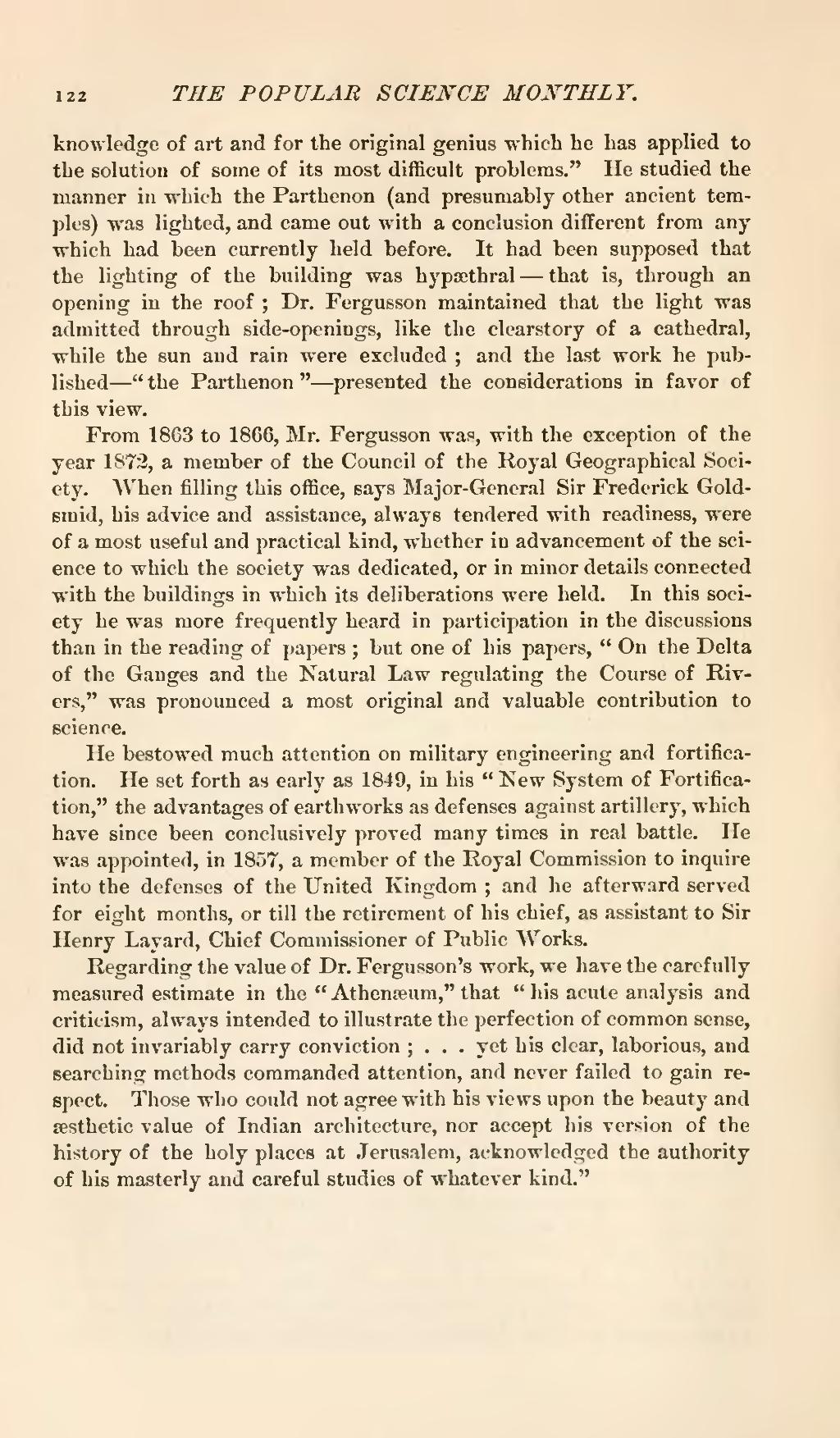knowledge of art and for the original genius which he has applied to the solution of some of its most difficult problems." He studied the manner in which the Parthenon (and presumably other ancient temples) was lighted, and came out with a conclusion different from any which had been currently held before. It had been supposed that the lighting of the building was hypæthral—that is, through an opening in the roof; Dr. Fergusson maintained that the light was admitted through side-openings, like the clearstory of a cathedral, while the sun and rain were excluded; and the last work he published—"the Parthenon"—presented the considerations in favor of this view.
From 1863 to 1866, Mr. Fergusson was, with the exception of the year 1872, a member of the Council of the Royal Geographical Society. When filling this office, says Major-General Sir Frederick Goldsmid, his advice and assistance, always tendered with readiness, were of a most useful and practical kind, whether in advancement of the science to which the society was dedicated, or in minor details connected with the buildings in which its deliberations were held. In this society he was more frequently heard in participation in the discussions than in the reading of papers; but one of his papers, "On the Delta of the Ganges and the Natural Law regulating the Course of Rivers," was pronounced a most original and valuable contribution to science.
He bestowed much attention on military engineering and fortification. He set forth as early as 1849, in his "New System of Fortification," the advantages of earthworks as defenses against artillery, which have since been conclusively proved many times in real battle. He was appointed, in 1857, a member of the Royal Commission to inquire into the defenses of the United Kingdom; and he afterward served for eight months, or till the retirement of his chief, as assistant to Sir Henry Layard, Chief Commissioner of Public "Works.
Regarding the value of Dr. Fergusson's work, we have the carefully measured estimate in the "Athenæum," that "his acute analysis and criticism, always intended to illustrate the perfection of common sense, did not invariably carry conviction; . . . yet his clear, laborious, and searching methods commanded attention, and never failed to gain respect. Those who could not agree with his views upon the beauty and æsthetic value of Indian architecture, nor accept his version of the history of the holy places at Jerusalem, acknowledged the authority of his masterly and careful studies of whatever kind."

